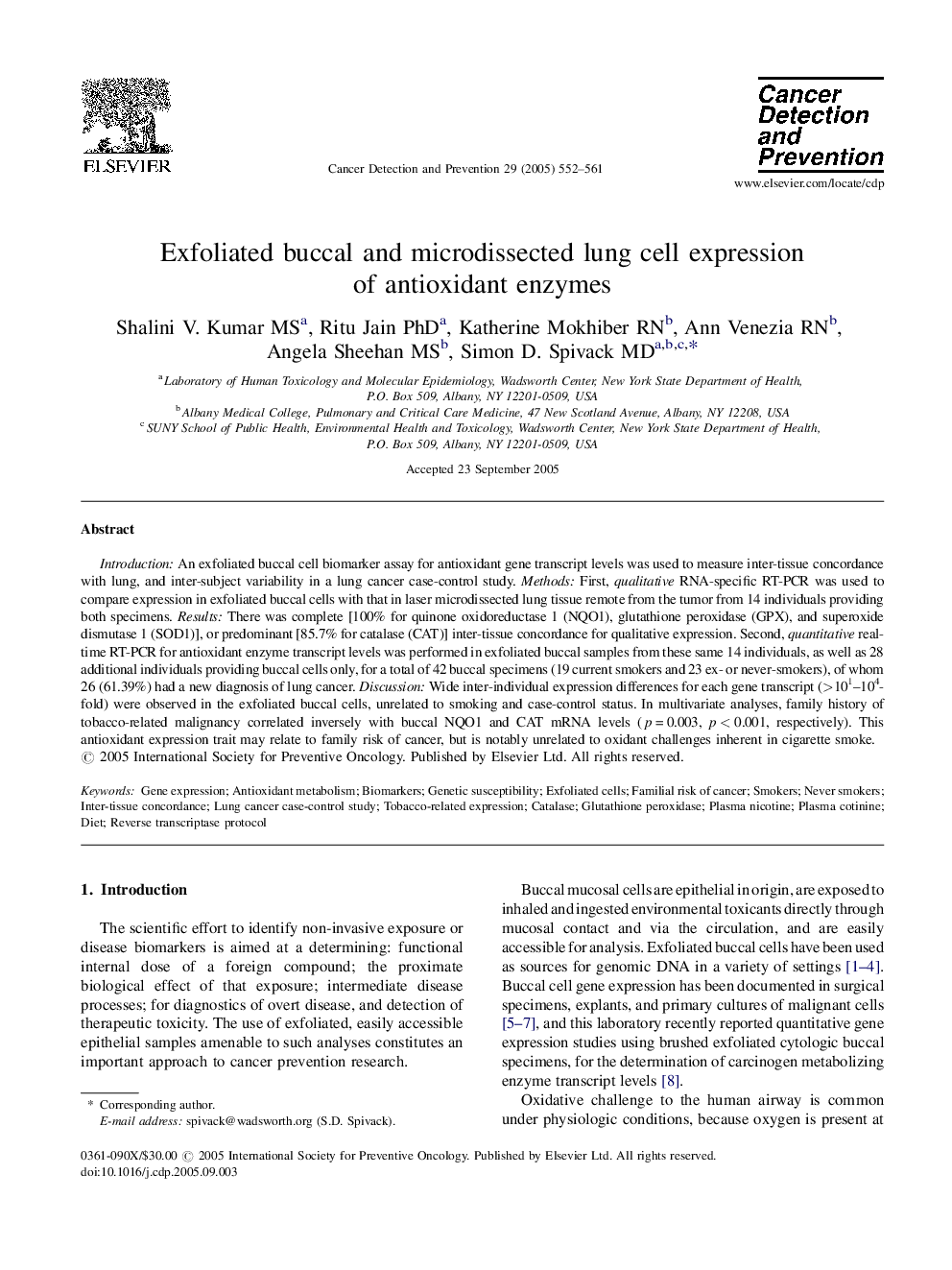| Article ID | Journal | Published Year | Pages | File Type |
|---|---|---|---|---|
| 9905089 | Cancer Detection and Prevention | 2005 | 10 Pages |
Abstract
Introduction: An exfoliated buccal cell biomarker assay for antioxidant gene transcript levels was used to measure inter-tissue concordance with lung, and inter-subject variability in a lung cancer case-control study. Methods: First, qualitative RNA-specific RT-PCR was used to compare expression in exfoliated buccal cells with that in laser microdissected lung tissue remote from the tumor from 14 individuals providing both specimens. Results: There was complete [100% for quinone oxidoreductase 1 (NQO1), glutathione peroxidase (GPX), and superoxide dismutase 1 (SOD1)], or predominant [85.7% for catalase (CAT)] inter-tissue concordance for qualitative expression. Second, quantitative real-time RT-PCR for antioxidant enzyme transcript levels was performed in exfoliated buccal samples from these same 14 individuals, as well as 28 additional individuals providing buccal cells only, for a total of 42 buccal specimens (19 current smokers and 23 ex- or never-smokers), of whom 26 (61.39%) had a new diagnosis of lung cancer. Discussion: Wide inter-individual expression differences for each gene transcript (>101-104-fold) were observed in the exfoliated buccal cells, unrelated to smoking and case-control status. In multivariate analyses, family history of tobacco-related malignancy correlated inversely with buccal NQO1 and CAT mRNA levels (p = 0.003, p < 0.001, respectively). This antioxidant expression trait may relate to family risk of cancer, but is notably unrelated to oxidant challenges inherent in cigarette smoke.
Keywords
Related Topics
Life Sciences
Biochemistry, Genetics and Molecular Biology
Cancer Research
Authors
Shalini V. MS, Ritu PhD, Katherine RN, Ann RN, Angela MS, Simon D. MD,
